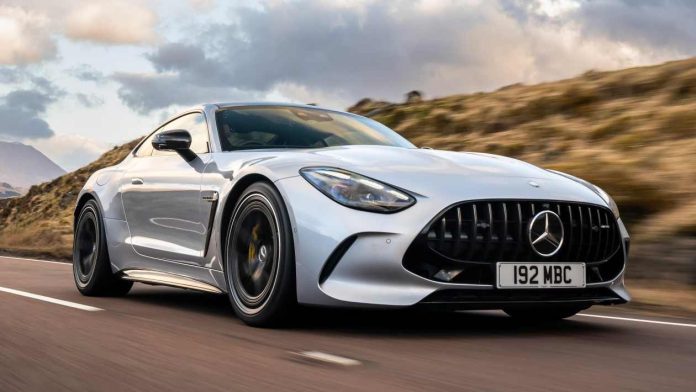Verdict
It carries the same name as its predecessor, but you have to judge the new Mercedes-AMG GT 63 on very different criteria. Its move towards a more refined, grown-up attitude has plenty of practical benefits, yet its tech-laden chassis still offers stunning performance and grip while adding continent-crossing comfort. Good though it is, there are cars for similar cash that do this even better, and it’s a shame that the change has come at the expense of the old car’s personality.
The all-new Mercedes-AMG GT has made it to the UK, and we’re struggling to think of anything else we’ve tested recently that has drawn so many double takes from the general public. Desirability really matters when you’re asked to sink £165,000 into a performance car, but public opinion seems to suggest that Mercedes-AMG has absolutely nailed it.
There’s a lot more to the new model than its looks, though, because in contrast with the outgoing first-generation AMG GT, this time around it’s taking a more mature, hi-tech approach. It’s doing so for one simple reason: to take aim squarely at the Porsche 911.
Although the pair locate their engines at opposite ends of the car, there are other 911 hints here. While the last AMG GT was a two-seater, this second-generation car has sprouted a couple of rear seats which, like the Porsche’s, are pretty much useless for carrying anything other than very small children. But with no engine out back, the Mercedes instead gets a generous 321-litre boot with a large hatchback opening.
The more practical shape is formed from a structure made from a mixture of aluminium, steel magnesium and carbon fibre, and is based on the same platform used by the latest Mercedes SL. However, there’s a lot going on to add sharpness from that starting point. The fully independent multi-link suspension is almost entirely made of forged aluminium to reduce unsprung mass; active roll stabilisation takes the place of traditional anti-roll bars, and rear-wheel steering turns in the opposite direction to the front axle below 62mph to increase agility, and in the same direction above 62mph to improve stability.









